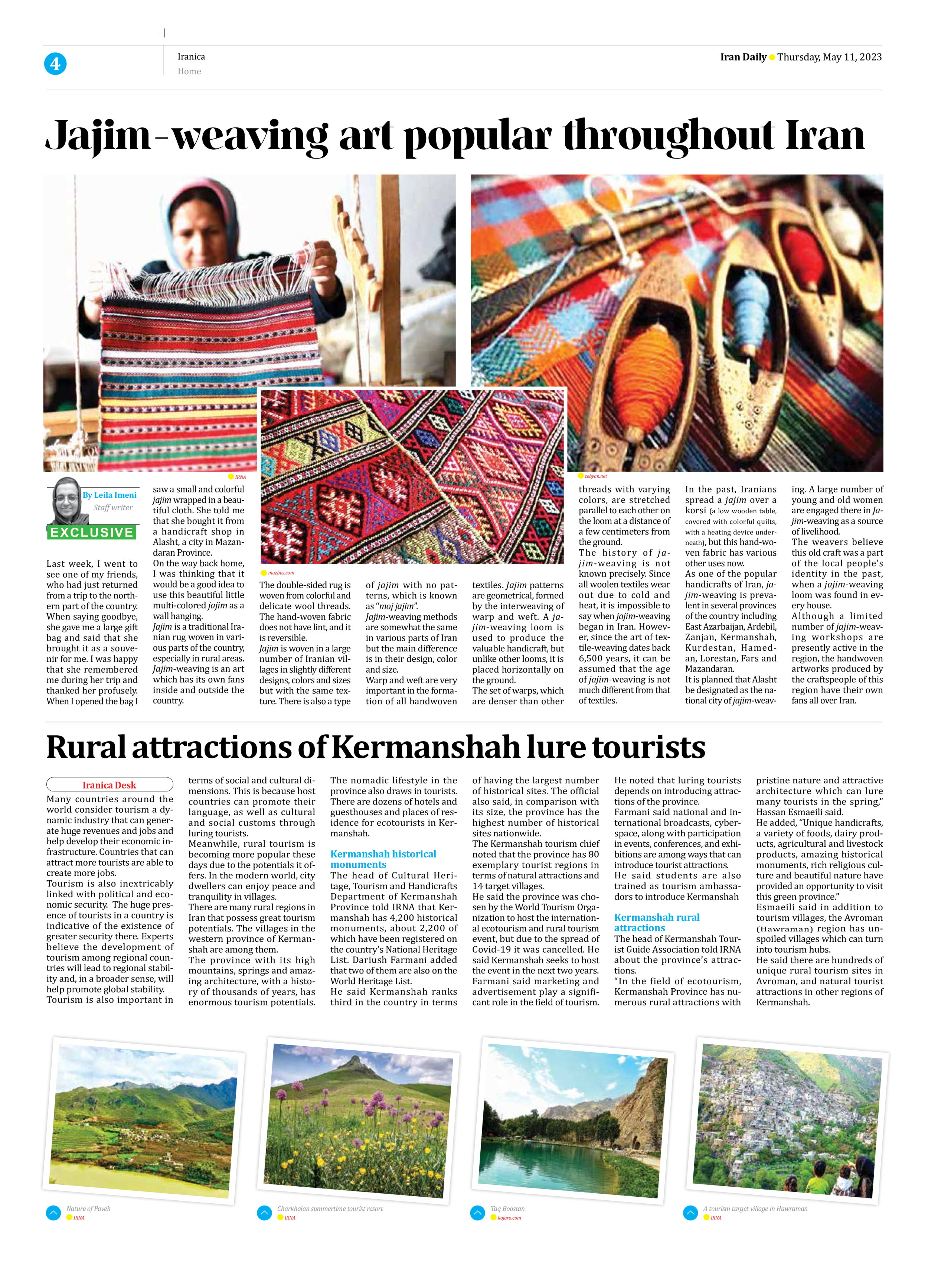
Jajim-weaving art popular throughout Iran
By Leila Imeni
Staff writer
Last week, I went to see one of my friends, who had just returned from a trip to the northern part of the country. When saying goodbye, she gave me a large gift bag and said that she brought it as a souvenir for me. I was happy that she remembered me during her trip and thanked her profusely. When I opened the bag I saw a small and colorful jajim wrapped in a beautiful cloth. She told me that she bought it from a handicraft shop in Alasht, a city in Mazandaran Province.
On the way back home, I was thinking that it would be a good idea to use this beautiful little multi-colored jajim as a wall hanging.
Jajim is a traditional Iranian rug woven in various parts of the country, especially in rural areas. Jajim-weaving is an art which has its own fans inside and outside the country.
The double-sided rug is woven from colorful and delicate wool threads. The hand-woven fabric does not have lint, and it is reversible.
Jajim is woven in a large number of Iranian villages in slightly different designs, colors and sizes but with the same texture. There is also a type of jajim with no patterns, which is known as “moj jajim”.
Jajim-weaving methods are somewhat the same in various parts of Iran but the main difference is in their design, color and size.
Warp and weft are very important in the formation of all handwoven textiles. Jajim patterns are geometrical, formed by the interweaving of warp and weft. A jajim-weaving loom is used to produce the valuable handicraft, but unlike other looms, it is placed horizontally on the ground.
The set of warps, which are denser than other threads with varying colors, are stretched parallel to each other on the loom at a distance of a few centimeters from the ground.
The history of jajim-weaving is not known precisely. Since all woolen textiles wear out due to cold and heat, it is impossible to say when jajim-weaving began in Iran. However, since the art of textile-weaving dates back 6,500 years, it can be assumed that the age of jajim-weaving is not much different from that of textiles.
In the past, Iranians spread a jajim over a korsi (a low wooden table, covered with colorful quilts, with a heating device underneath), but this hand-woven fabric has various other uses now.
As one of the popular handicrafts of Iran, jajim-weaving is prevalent in several provinces of the country including East Azarbaijan, Ardebil, Zanjan, Kermanshah, Kurdestan, Hamedan, Lorestan, Fars and Mazandaran.
It is planned that Alasht be designated as the national city of jajim-weaving. A large number of young and old women are engaged there in Jajim-weaving as a source of livelihood.
The weavers believe this old craft was a part of the local people’s identity in the past, when a jajim-weaving loom was found in every house.
Although a limited number of jajim-weaving workshops are presently active in the region, the handwoven artworks produced by the craftspeople of this region have their own fans all over Iran.







